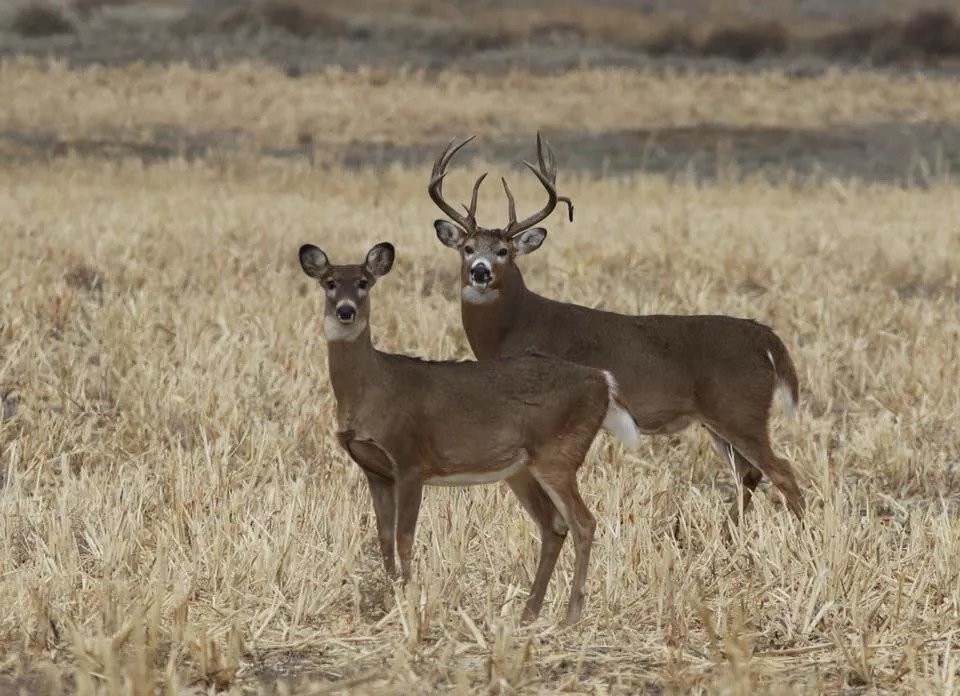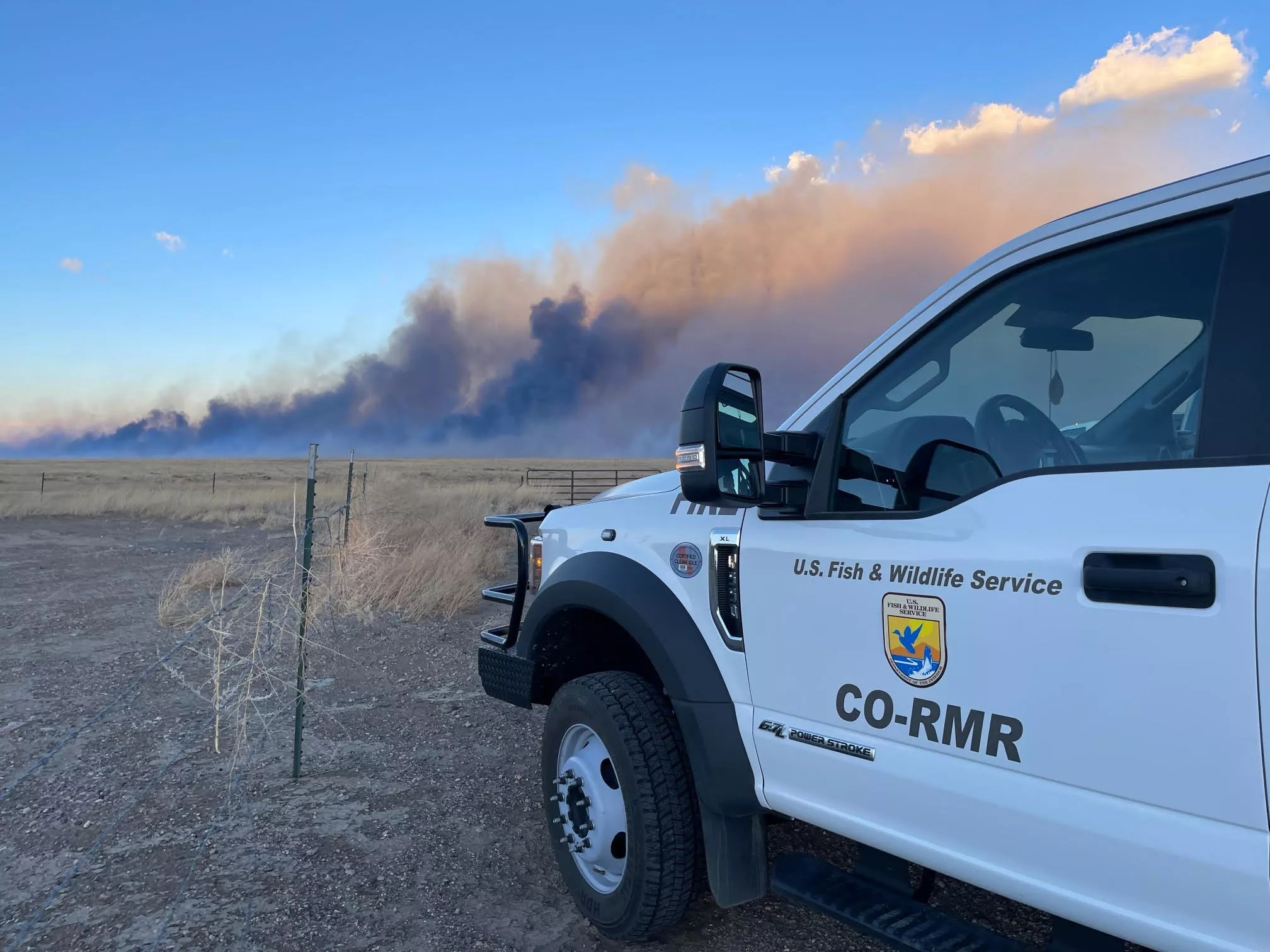
Rocky Mountain Arsenal National Wildlife Refuge

Audio By Carbonatix
If you see smoke coming from the Rocky Mountain Arsenal National Wildlife Refuge this week, don’t panic. The U.S. Fish and Wildlife Service plans to conduct a prescribed burn there, weather – and wind – permitting.
The Rocky Mountain Arsenal, which is located just northeast of the old Stapleton Airport, got its start during World War II as a U.S. Army chemical weapons manufacturing facility. At one point it was considered a possible site for the expansion of Stapleton; instead, it was shut down by the feds and designated as a future wildlife refuge in 1992. The cleanup of the former arsenal’s 15,000 acres that had been contaminated by a variety of chemicals over the decades was completed in 2010, and the refuge opened the next year.
It’s overseen by U.S. Fish and Wildlife, which also manages metro Denver’s two other wildlife refuges: Two Ponds National Wildlife Refuge and Rocky Flats National Wildlife Refuge. Rocky Flats hasn’t had a prescribed burn since 2004 or publicly discussed one since 2015, but that facility was on an early evacuation alert during the Marshall fire. In fact, the Rocky Flats Stewardship Council will discuss fire management at the refuge at its quarterly meeting on February 7.
Pile burns like the one planned for the Rocky Mountain Arsenal refuge help remove slash, the woody debris that can fuel wildfires. There it’s mostly Russian olive, an invasive plant that’s a threat to native species. But according to Jessica Sutt, a U.S. Fish and Wildlife public affairs specialist, the main goal of the prescribed burn is to reduce the risk of wildfire, especially considering the refuge’s proximity to urban areas.
When news happens, Westword is there —
Your support strengthens our coverage.
We’re aiming to raise $50,000 by December 31, so we can continue covering what matters most to this community. If Westword matters to you, please take action and contribute today, so when news happens, our reporters can be there.
“Burning slash piles is another fuels-reduction fire management activity that works to protect refuge habitats and our neighbors from harsh fire behavior,” Sutt says. Most prescribed burns occur in the fall and spring, because summer is too hot and fuels can be overly dry in the winter. But pile burns, for example, are often conducted in the colder months because it’s easier to eliminate slash.
The Colorado Division of Fire Prevention and Control, which administers prescribed burns on state lands, works with other local and federal entities on their fires and oversees the Colorado Certified Burner Program, says that prescribed burns are one of the most effective tools for preventing the outbreak and spread of wildfire, since they reduce excessive amounts of brush, shrubs and trees that provide fuel. Each site, and burn, requires its own plan to ensure safety.
“It has to be a right time, right place type of thing,” says Kirk Will, DFPC prescribed fire and fuels unit chief. “Anywhere could be a candidate until determined to not be one – until we go through the risk and the planning process.” The agency considers 24 elements when going through that process, including establishing objectives for the burn, environmental parameters, health hazards and weather.

U.S. Fish and Wildlife Service officials monitored the Marshall fire from the edge of the Rocky Flats National Wildlife Refuge.
U.S. Fish and Wildlife Service
The Marshall fire has brought renewed attention to wildfires. Although DFPC says that the conditions that fanned those flames were highly unusual, already three bills related to fire management have been introduced in the Colorado Legislature. One focuses on controlled burns.
Introduced by Representative Richard Holtorf and Senator Larry Liston, that bill would require property owners to notify the fire department in their jurisdiction about any planned controlled burns, and stipulates that controlled burns cannot be conducted in conditions of high wind or drought, or if there is a red flag warning in the county.
The nonprofit Western Resource Advocates has an idea for another bill that could guide prescribed burns on private property. “Prescribed burning is one of the most cost-effective tools out there in terms of mitigating wildfire risk,” says Rachael Hamby, Western Lands senior policy analyst. “You sometimes run up against policies that make it difficult to use prescribed fire even if you’re operating within rigorous health and safety standards.”
Those policies can come from a variety of entities, including local governments or homeowners’ associations, which sometimes have blanket bans on burns that don’t take specific situations into account, she notes. Because of that, Western Resource Advocates hopes to see legislation that will ensure landowners aren’t denied the right to use prescribed burning on their property if they meet safety requirements. Those requirements would include acquiring proper smoke permits, working with a certified burner or prescribed burn boss, and developing a written and approved burn plan.
“There’s a number of safety and health safeguards in place, but if you meet those, then people can’t tell you that you can’t conduct your prescribed burn simply because they don’t like it,” Hamby says. “It has to be for reasons of safety and health.”
Hamby presented the idea to the Wildfire Matters Review Committee and says legislators showed interest. “We should do everything we can to make it possible and easier for experts to use this tool under the right conditions, and if we don’t, we’re just going to continue to see more lives and homes and communities being threatened by catastrophic wildfire,” Hamby says.
So if you see smoke coming from the Rocky Mountain Arsenal this week, take comfort in knowing that each planned fire minimizes the risk of a surprise, potentially catastrophic one.
“Prescribed fire is a tool,” Will says. “When it’s used well, it does a lot of good for the land. We’re not out there just burning to burn. It’s been planned. It’s been thought out.”